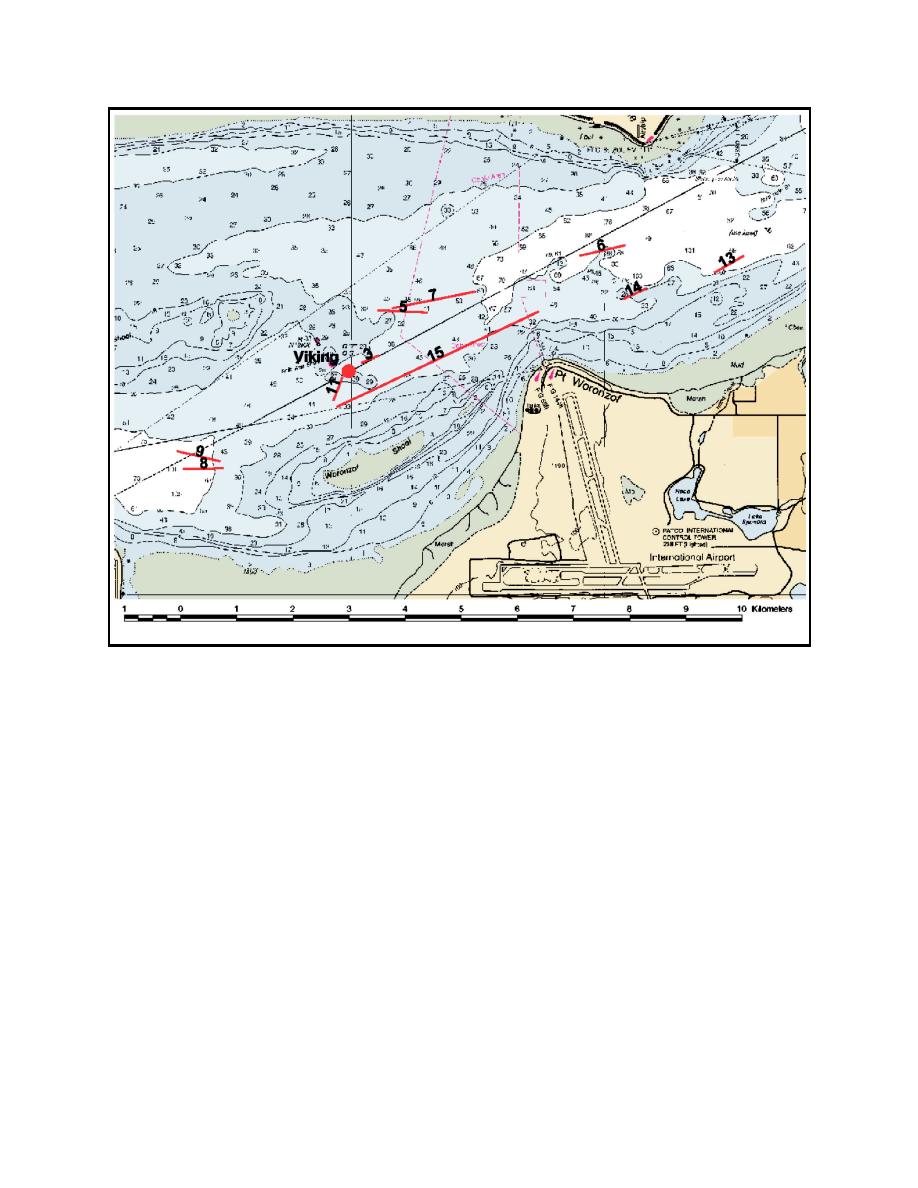 |
||
|
|
||
|
Page Title:
Figure 1. Location of drift transects in Cook Inlet, Alaska |
||
| |||||||||||||||
|
|
 ERDC TN-DOER-E14
August 2001
Figure 1. Location of drift transects in Cook Inlet, Alaska
material disposal event from the Viking operation. Sessions 16 and 17 monitored the Crystal Gayle
dredging operations. Sessions 18 and 19 attempted to record ambient conditions in the vicinity of
the Viking. After an initial assessment of the data, it was determined that more ambient data were
required to complete the analysis. Ambient recording sessions 20-24 were completed the following
year (August 2000).
Bucket dredges, exemplified by the Viking, are relatively stationary (Figure 2). While operating,
the dredge swings slowly in an arc across the channel cut as material is excavated. This is
accomplished by pivoting the dredge on vertical pilings called spuds that are alternately raised and
lowered from the stern corners of the dredge. Cables to anchors set roughly perpendicular to the
forward section of the dredge are used to shift the lateral position of the digging area. Periodically,
as the cut advances, the anchors are reset. Sounds produced by this type of dredging can best be
described as repetitive rather than continuous. Bucket dredging entails lowering the open bucket
through the water column, closing the bucket after impact on the bottom, lifting the bucket up
through the water column, and emptying the bucket into a barge. For the purpose of sound
characterization six distinct "events" composing a single cycle of bucket deployment and retrieval
were identified:
4
|
|
Privacy Statement - Press Release - Copyright Information. - Contact Us - Support Integrated Publishing |